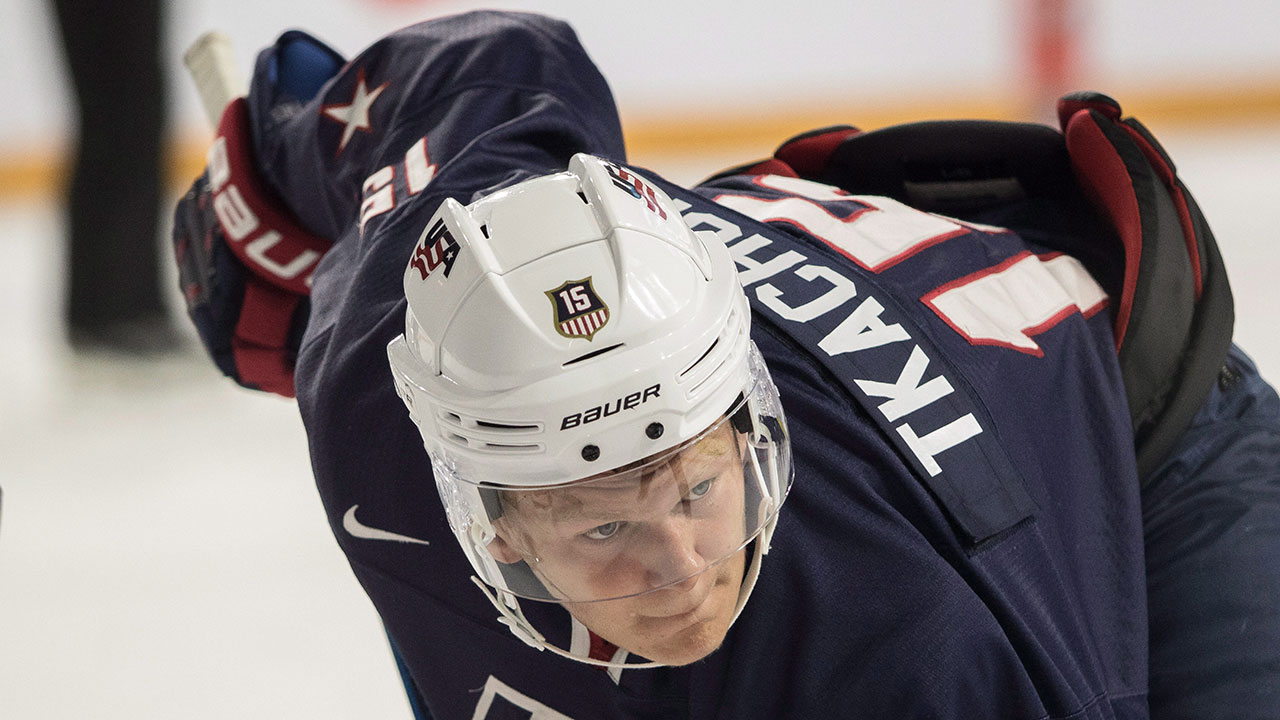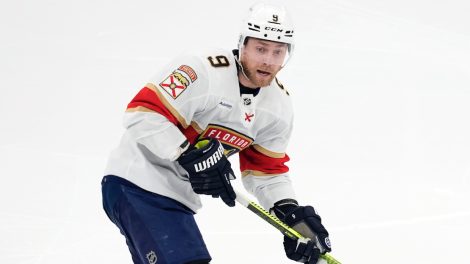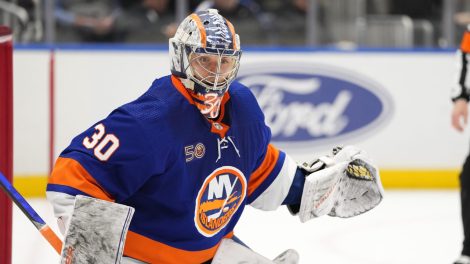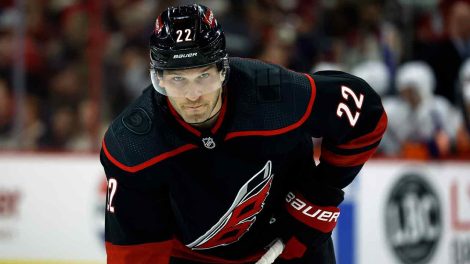TORONTO – Back in Sweden they are not waiting for Timothy Liljegren to come home.
It’s evident across the phone line that Anders Carlsson, the general manager of Rogle BK, suspects the 18-year-old defenceman might already be gone for good.
“I have a good relationship with Lou Lamoriello,” Carlsson said Friday. “He was my GM when I played in the NHL (with New Jersey), so I’ve known him for a long time. We have full respect with whatever they decide to do.
“We’ll be very happy if Timmy comes back to us. If not, we’ll be happy for him. He’s a great kid. It’s huge for us that a team like Toronto Maple Leafs wants to sign one of our young players.”
Now they must determine how best to foster his development.
[relatedlinks]
The ball is entirely in Toronto’s court. Since Liljegren is a first-round draft pick and has already signed an entry-level contract, the European transfer agreement permits the organization to assign him directly to the American Hockey League this fall.
He could also be loaned back to Rogle, but that doesn’t appear to be where this situation is headed.
There are several reasons why the Leafs will probably start Liljegren with the Marlies – chief among them the chance to monitor his progress from close range. It would give them total control over his usage, ice time, defence partner(s) and matchups as he makes the transition to the smaller North American ice.
It’s also important to note that the first year of his contract will slide assuming he doesn’t play 10 NHL games this season. Sure, he’ll count among the 50 deals a team can carry at any given moment, but there’s literally no other downside to playing him in the AHL right away.
Even Carlsson, who stands to benefit if he’s sent back to Rogle, acknowledges that the Marlies make a lot of sense.
“For some players, they need to maybe stay here (in Sweden) and develop their skills,” said Carlsson. “But Timothy is very, very skilled so he has that (already). For him, I think it might be good to stay over there and learn how to play on the small ice.”
That is an adjustment for every European who has grown up skating on wider dimensions. The angles change and the game comes at you quicker. Decision-making is at even more of a premium.
[snippet id=3317857]
As Liljegren prepared for this weekend’s prospect tournament at Ricoh Coliseum, he spoke of wanting to stay within himself and not get caught holding on to the puck too long.
“It’s actually harder than you think,” he said. “When I was younger I could always skate with the puck the whole way. I don’t really (think) I can do that anymore. It’s hard to adapt, but I think I’ve been getting better at it this pre-season.”
The Leafs were thrilled to land the right-shot, offensively-minded defenceman with the 17th pick in June. His draft stock tumbled after he was kept off the ice for seven weeks last season while recovering from mononucleosis.
Liljegren managed to add about five pounds of muscle over the summer – “I’ve been eating a lot,” he said – and intends to keep working at improving his upper-body strength.
The question of how best to develop young Swedish prospects is currently a hot topic of conversation in that country. A delegation of four top officials even travelled to Florida in March to address NHL general managers about the benefits of leaving draft picks at home longer.
There is certainly no catch-all answer. What’s best for one player may not work as well for another.
For example, Senators captain Erik Karlsson returned to the Frolunda Indians the year after he was drafted by Ottawa and then played 12 games with AHL Binghamton before becoming a full-fledged NHLer. Earlier this week, he credited the Frolunda organization for turning him into a “real professional.”
“(They) really paved the path for me to come over here and be doing what I do today,” said Karlsson.
[snippet ID=3322139]
Liljegren has been part of the Rogle club since being recruited at age 14. This may be the end of the road.
As much as the player was slowed by mono in his draft year, Carlsson notes that he returned late and “did more than we expected for him after the sickness.”
“Oh, I’m pretty sure he’ll be a good NHL player,” said Carlsson. “His skillset is unbelievable. His touch with the puck and the way he can shoot the puck. He has a great shot. He can pass the puck and his skating is good.
“If he wants to be a NHL player and he practises hard for it, he will be a NHL player.”
What’s interesting is that Liljegren himself seems to be in no rush. With his first NHL training camp on the horizon and the Leafs closely monitoring his progress, he’s talking about doing things at his own pace and not adding any undue strain to his situation.
It’s an awfully mature outlook.
That said, he doesn’t sound like someone who expects to be back in Sweden any time soon.
“I packed as much as I could,” said Liljegren. “If I stay, I’ll just have to buy some clothes.”









